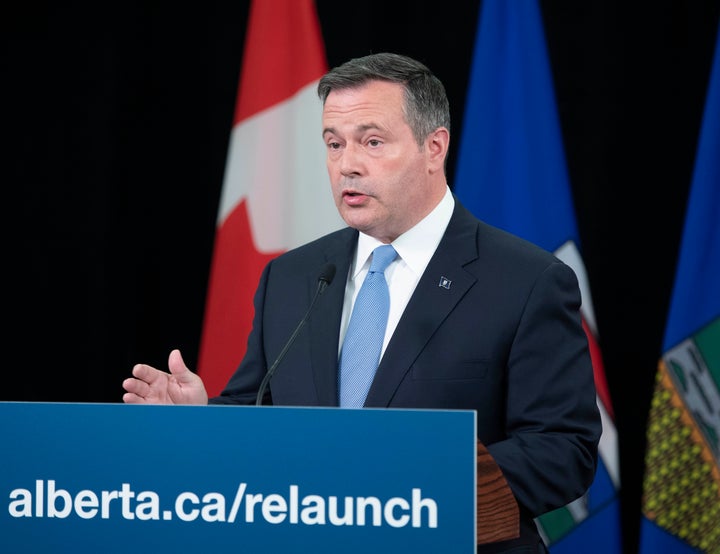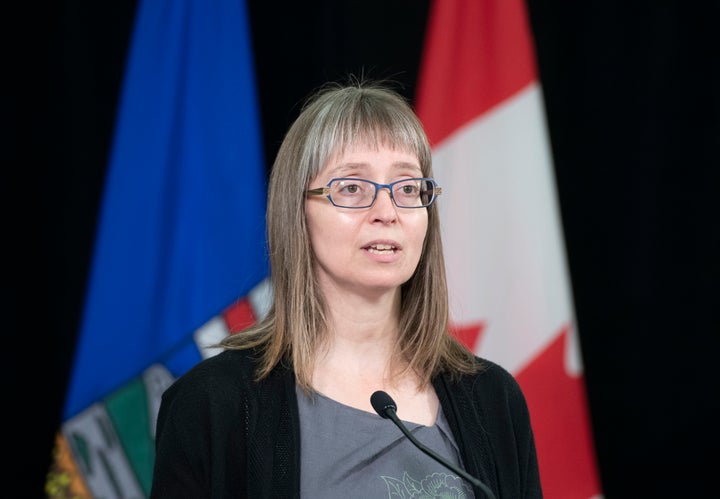Despite cries to limit the number of bodies in classrooms as Alberta students return to school this week, an injection of $262 million from the federal government won’t be enough to lower class sizes in the province, according to Premier Jason Kenney and Education Minister Adriana LaGrange.
LaGrange announced Wednesday that the majority of the money would not be put toward any targeted province-wide initiatives such as limiting class sizes to prevent the spread of COVID-19, but rather would be distributed to public and private school boards in two instalments on a per-student basis to be used on sanitization and supplies as schools see fit.
The Calgary Board of Education and Edmonton Public Schools are set to receive $44.5 million and $37.4 million respectively, working out to just over $350 per student. Private and charter schools will also receive a chunk of the funding, and an extra $12 million will be doled out by the province to assist schools facing a surge in online enrolment.

“I believe that this approach is the fairest and most equitable way to disperse the funding,” LaGrange said.
Kenney confirmed Tuesday the province won’t push to reduce class sizes. He called any plan to do so “unrealistic.”
“We appreciate the additional federal funding, but there is no world in which you could reduce class sizes in half and reopen the schools for the current school year,” Kenney said.
Class sizes have become the rallying cry of Kenney’s opponents looking to tear down the province’s plan. But what is the context for calls to lower them in the province? And how realistic would smaller classes actually be?
Where are Alberta class sizes at now?
Prior to the pandemic, Alberta already had the second highest average class sizes of major provinces in Canada after Quebec, according to a 2019 Fraser Institute study. The average class in the province has over 30 students.
The province quietly removed social distancing requirements from the school reopening plan this past weekend, hours before schools were set to reopen, essentially to reflect the reality that a classroom of 30 students can not have desks two metres apart.
Alberta chief medical officer Dr. Deena Hinshaw defended the change Wednesday, arguing that many jurisdictions around the world have distancing requirements of only one metre. She said students returning to classes in person, even if distancing can’t be maintained, is worth it.

“There is a greater good for allowing students and facilitating students’ return to in-person learning,” she said.
Hinshaw said Alberta’s plan was consistent with other provinces’ plans and plans around the world.
“As a parent, I know that returning to school in person is never without risk even before COVID,” she said. “When our children leave the house in the morning, they must navigate risks of all kinds, and COVID-19 is one more among them.
Teachers have shared images of their classrooms online showing desks tightly packed together and against the walls. One teacher even said her classroom was laid out so that she would be instructing from the doorway.
Do class sizes matter?
Studies have shown that class sizes can have an impact on COVID-19 transmission. A recent study out of the University of Waterloo and the University of Guelph found that transmission rates dramatically increased alongside the number of students in a classroom.
Using mathematical modelling, researchers found that doubling the number of students in a class from 15 to 30 doesn’t just double the rate of transmission, but often triples or even quadruples the rate of cases. Researchers called it a “triple whammy” in terms of infections.
And while increased hygiene measures helped limit transmission, researchers concluded that limiting class sizes was the best way to prevent spread.
The opposition NDP, parents and teacher groups have all called on Kenney’s government to reduce class sizes.
“What we would like to see are more resources and supports provided to school divisions and principals so they have more opportunities to reduce the size of our largest classes, especially at the upper grades,” Alberta Teachers’ Association president Jason Schilling said in a written release Wednesday.
In the U.S., where many returning schools have not limited class sizes, the confirmed case rate among children has dramatically climbed in recent weeks as students have returned to school.
How much would reducing class sizes cost in the context of Alberta’s budget?
According to NDP MLA Joe Ceci, the federal funding replaces only half of the total cuts to education under the UCP in recent months.
On Wednesday, LaGrange denied claims the federal funds were simply being used to offset UCP cuts, arguing that the 2020/21 school year budgets actually featured $120 million more in funding from the previous year.
“We are 100 per cent committed to ensuring a safe re-entry,” LaGrange said.
Shortly after Kenney’s government unveiled its plan earlier this summer, the opposition NDP put forward a 19-page alternative plan that included enhanced social distancing and smaller class sizes.
The NDP proposed capping class sizes at 15 students, and hiring enough teachers to make that possible. Kenney has said that cutting Alberta class sizes in half would cost the province north of $4 billion, but the NDP argue it would only cost the province a quarter of that.
“What we would like to see are more resources and supports provided to school divisions and principals so they have more opportunities to reduce the size of our largest classes, especially at the upper grades.”
- Alberta Teachers’ Association president Jason Schilling
“[The NDP’s] total cost of the proposal is just over $1 billion,” NDP education critic Sarah Hoffman said when the plan was announced. “And that is a lot of money, but the cost of doing nothing is far greater. I think our kids are worth it.”
The NDP plan also suggested rehiring the 20,000 education support staff laid off by the province in the spring and working with municipal governments to secure other public spaces where classes could be held.
At the time of its release, a spokesperson for the government called the NDP proposal an “uncosted, guestimate-ridden non-plan.”
How are other jurisdictions limiting class sizes?
Other places are getting creative in how they’re ensuring students can safely distance, including holding class outside, repurposing gymnasiums or renting temporary trailers.
At the prospect of outdoor learning in Ontario, in July Premier Doug Ford said all ideas were welcome.
“I have always said that in business and in politics no idea is a ridiculous idea,” Ford said. “Let’s come up with ideas. We are all in this together. We need the parents’ ideas, we need the teachers and the school boards and the ministry and most of all we need the kids.”
In Alberta, the province will not be specifically directing any initiatives for alternative learning spaces. On Wednesday, LaGrange says utilizing any vacant learning spaces to free up class space will be up to school boards.